13 April 2018
Countdown to the Venice Architecture Biennale 2018.
Words by Anne Susskind for The Fifth Estate.
Buildings should work with natural systems, not obstruct them, according to Melbourne architect Louise Wright, one of the creative directors of the Architecture Biennale, which opens in Venice in May.
That might sound like stating the obvious, but doing the right thing environmentally has not always been top of mind in a profession often at the mercy of commerce and big money.
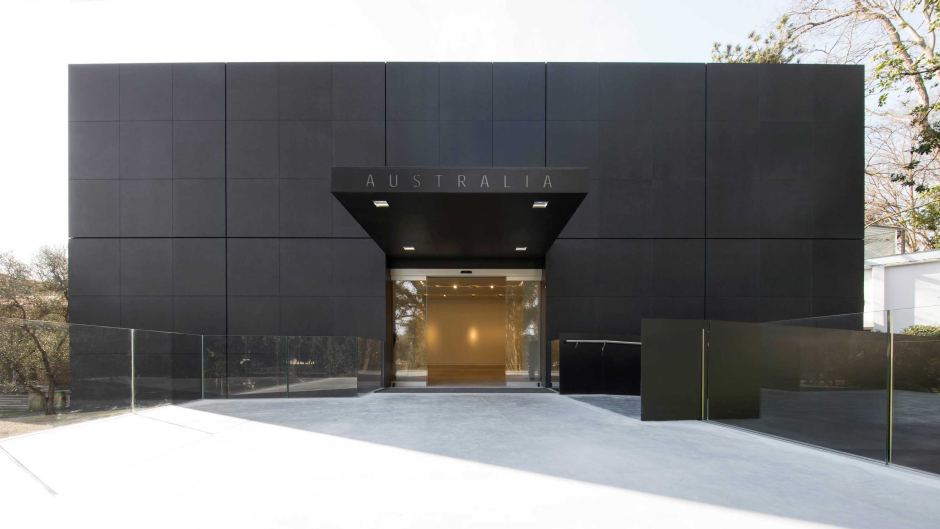
Image: Australian Pavillion designed by Denton Corker Marshall
The theme of this year’s Biennale is “Freespace”, and the Australian exhibition presented by the Australian Institute of Architects is called repair. It will display a collection of 15 projects inside the Denton Corker Marshall designed pavilion. They’re set in a temperate “grassland” of 10,000 plants, described as a “living installation” that aims to “remind us what is at stake when we occupy land”. By their very nature, architecture and cities “erase” what is there.
Wright, who co-curated the exhibition with Mauro Baracco (of Baracco+Wright Architects),said they’d had 126 submissions to choose from, a reassuringly large number, indicative of a growing interest in ways to approach repair. Initially they had intended to choose 10, but in the end settled on 15.
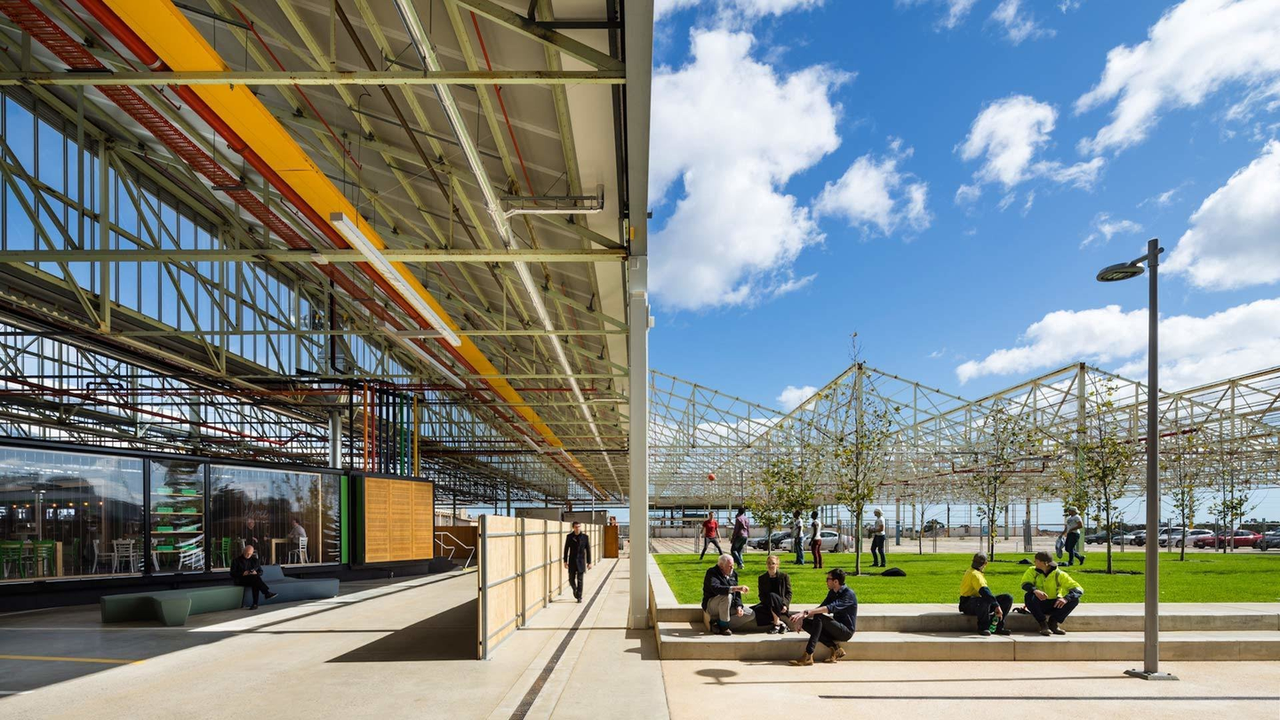
Image: Tonsley Park Redevelopment by Woods Bagot & Tridente
Among the projects being exhibited (via projections of the buildings in their contexts, filmed by artist Linda Tegg) is the Woods Bagot/Tridente former Mitsubishi main assembly building in Tonsley, South Australia, a huge factory that has been re-purposed – “a physical place in decline” from the car manufacturing industry turned into a new clean technology research and education centre.
Wright said: “It’s not cafes and restaurant, but an investment in long-term repair, with the decline of certain economies… they kept the slab and everything else was opened up. They saved a huge amount of embodied energy and waste by re-using that.” Important, as construction waste in Australia accounted for almost half of landfill, she said.
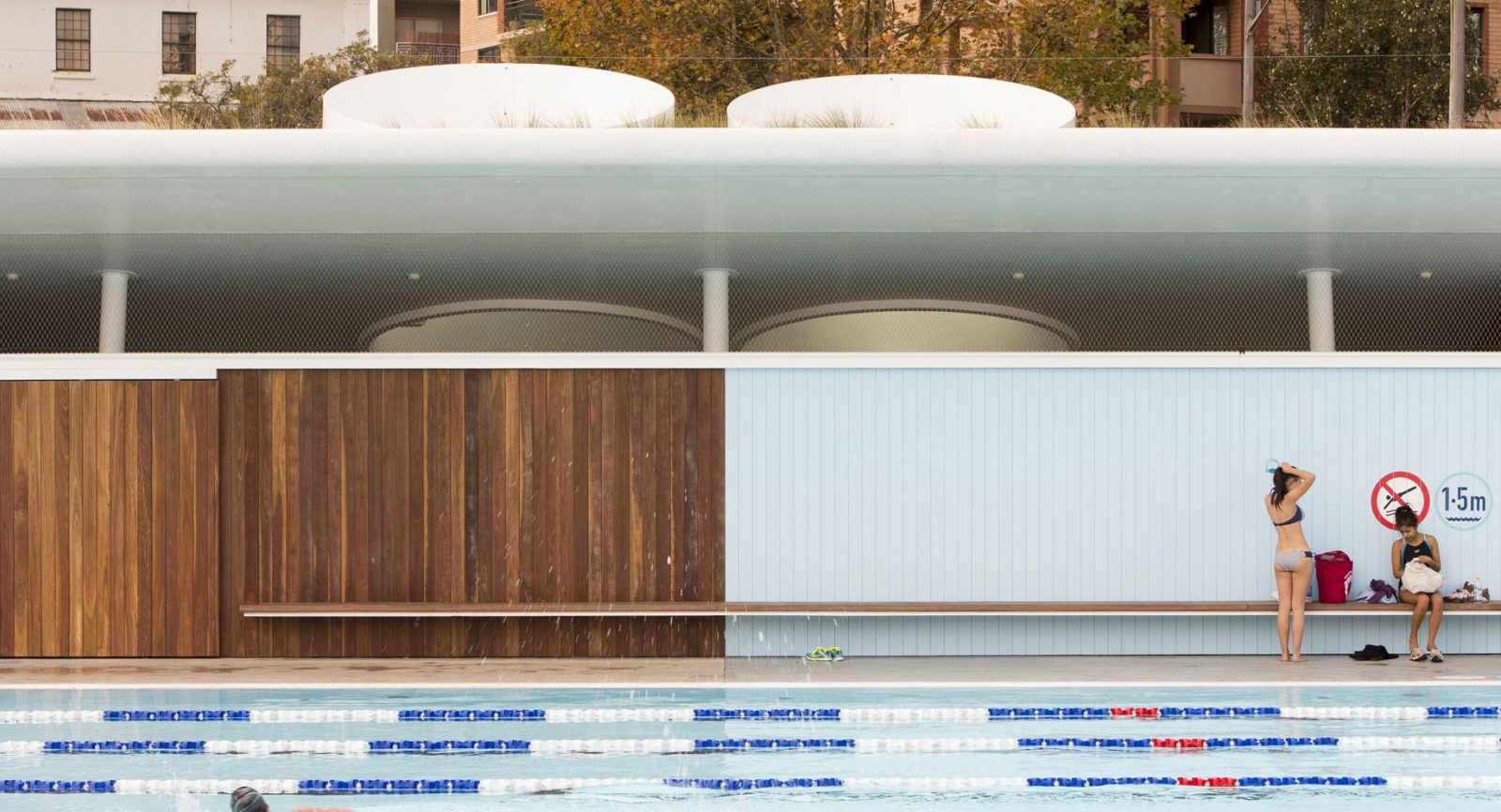
Image: Prince Alfred Park Pool by Neeson Murcutt Architects
Among the other projects is the Prince Alfred Park Pool by Neeson Murcutt Architects and landscape designer Sue Barnsley, which Wright said addressed a lot of complex issues in an urban site. While upgrading the pool, the team had “seized the opportunity” to address the park and create a generous streetscape, a “close coming together” between architecture and landscape to effect repair.
On display also is an unrealised competition entry for the Shepparton Art Museum by Kerstin Thompson Architects. Located on the banks of the Goulburn River in a flood zone, Wright said Thompson’s proposal took its design cues and the way the building was conceived from allowing the Goulburn river to flood through the ground plain.
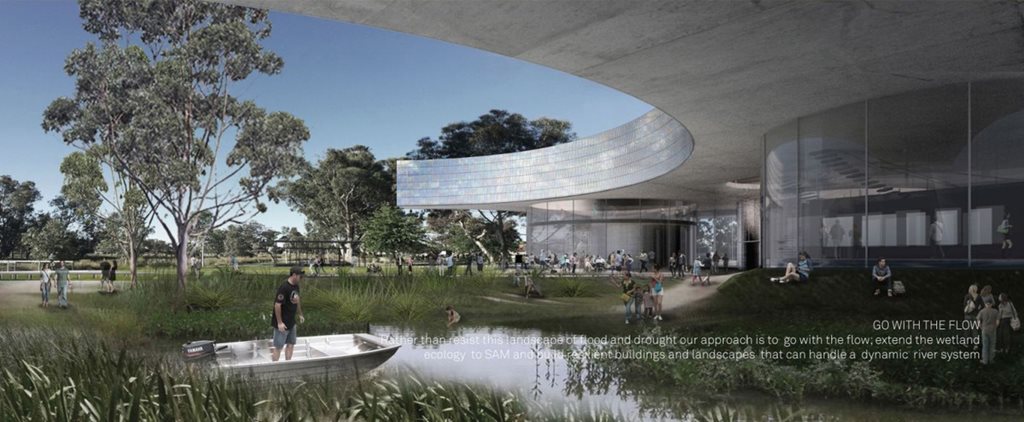
Image: Competition Entry for Shepparton Art Museum by Kerstin Thompson Architects.
“That’s an approach to environment we are keen to promote, where buildings work with natural systems rather than obstruct them.”
Designed by the Bower Studio at the University of Melbourne, a Northern Territory project on display is a series of three pavilions that commemorates the Wave Hill Station protests of 1966, when 200 Gurindji, Mudburra and Warlpiri stockmen, domestic workers, their elders and children walked off the station in protest against their treatment by station owners.
“It’s a collection of projects that show diverse forms of repair. They all engage with the natural environment, community and places that they are part of,” Wright said.
Many architects perhaps have not had enough opportunity to realise projects in this way. Given more agency, she is sure they would do more to effect environmental repair, but said that architects often only have opportunities to work on a small area, and these are issues that need to be addressed in a multidisciplinary way at large and small scale.
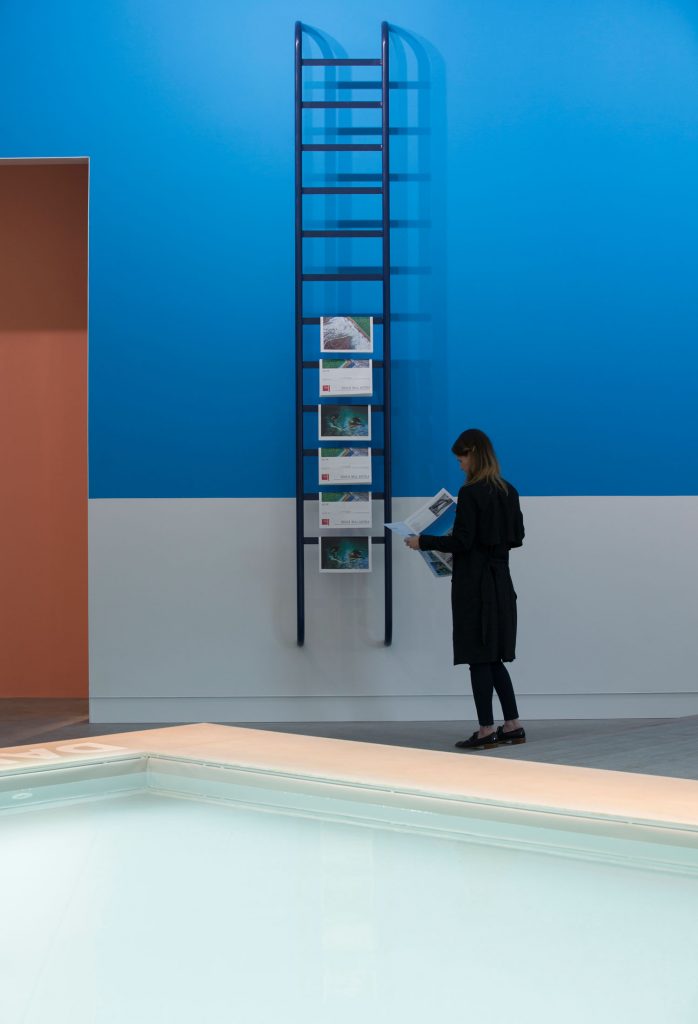
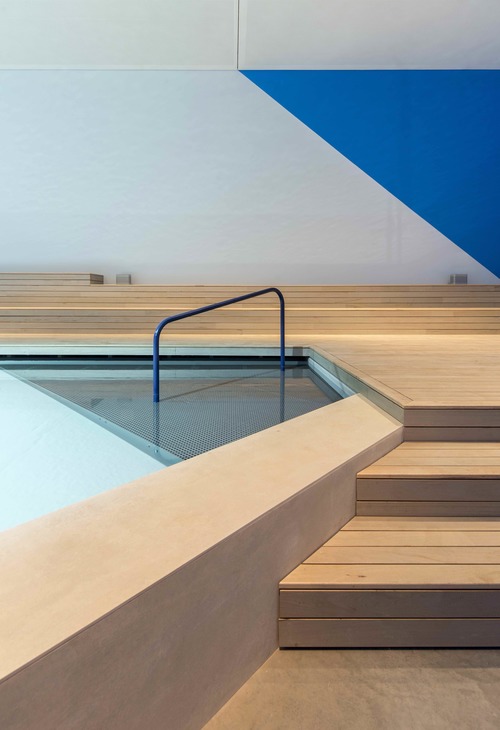
Images: Venice Architecture Biennale 2016 – Australian exhibition by Aileen Sage Architects
“We are getting better as a profession in understanding the relationship between how we use land and natural systems. The denial of [our effect on] natural systems is starting to reveal itself in terms of flooding and all kinds of climate change … as a profession we need to think more carefully how we can work with those things.
“That’s our message – that architects can be involved in all kinds of repair… at the centre is environmental repair. If you care for an environment, all other kinds of repair can flow from that – social, cultural and even economic.
“As a profession we have often been more interested in form-making and the culture of architecture. I think you can do both. It’s more about being inclusive, not one at the sake of the other. If we allow these conditions to come in, we could create a very exciting architecture we don’t know about yet.
“We’re advocating a role for architects among the many players that it takes to repair something. To effect repair, there has to be multidisciplinary approach, and equality for other professions too, particularly landscape architecture.”
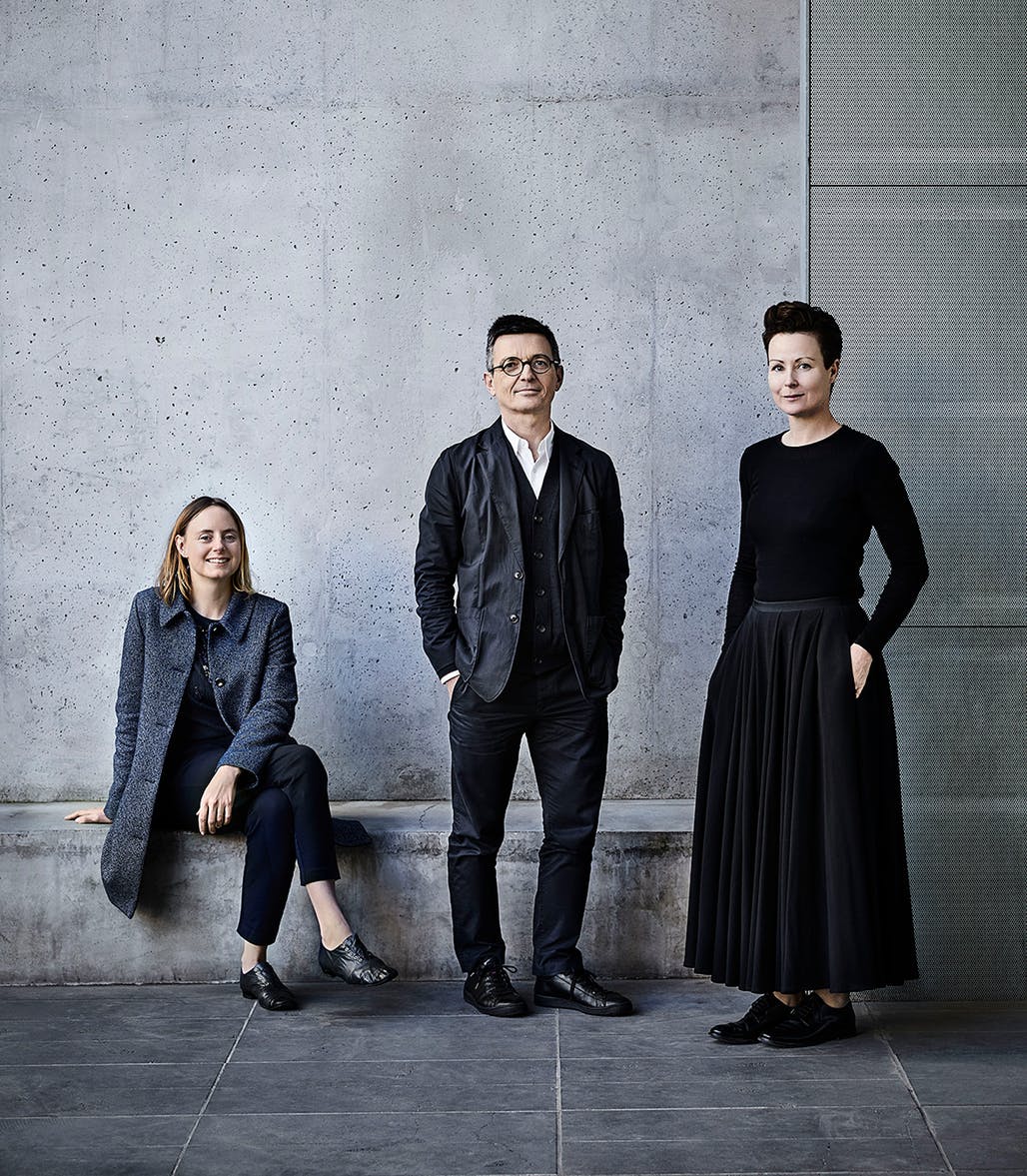
Image: Creative Directors Group – Venice Biennale 2018
A pre-exhibition event for the Australia entry was held in Melbourne on Wednesday 11 April, and one will be held in Sydney on 12 April. The Australian pavilion at the Architecture Biennale 2018 will exhibit from 26 May-25 November.
To view original article by The Fifth Estate, click here.